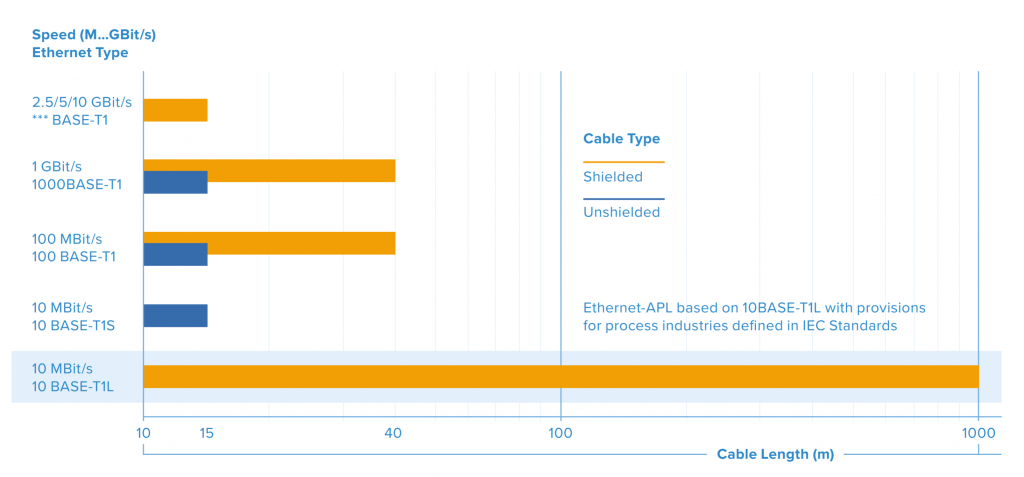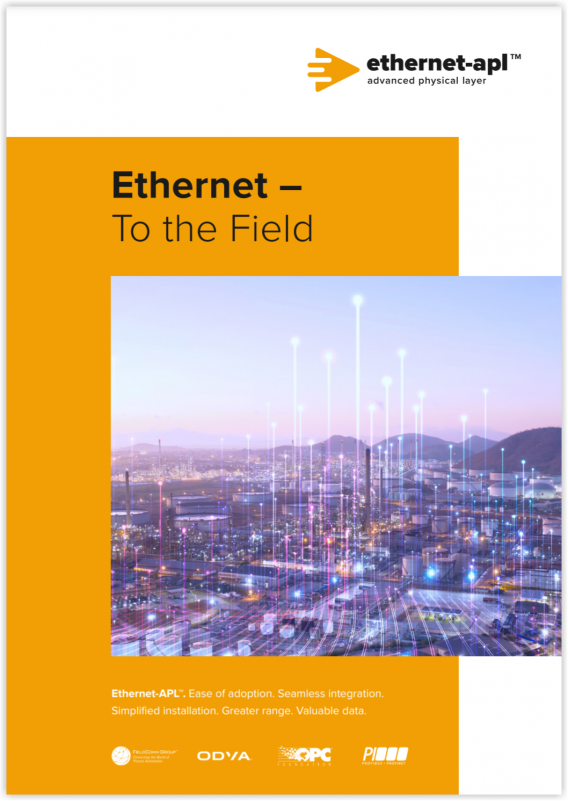ETHERNET-APL EXPLAINED
Ethernet is a broadly accepted standard for wired digital communications that is standardized in IEEE 802.3. Its wide acceptance in industries and households created an eco-system of standardized tools for installation, troubleshooting, and diagnostics.
Ethernet-APL is an enhanced physical layer for single-pair Ethernet (SPE) based on 10BASET1L. It communicates via a cable length of up to 1000 m at 10 MBit/s, full-duplex, which is more than 300 times faster than current technologies, such as HART or fieldbus. It is the logical extension for Ethernet and provides the attributes required for reliable operation in the field of a process plant. Ethernet-APL is a physical layer that will be able to support EtherNet/IP, HART-IP, OPC-UA, PROFINET, or any other higher-level protocol.

Ethernet with an Advanced Physical Layer (Ethernet-APL) will enable long cable lengths and explosion protection via intrinsic safety with communication and power over two wires. Based on IEEE and IEC standards, Ethernet-APL supports any Ethernet-based automation protocol and will develop into a single, long-term stable technology for the entire process automation community.
Explore these topics in the Ethernet-to-the Field Technical Paper:
- Standardization for Long-Term Stability
- Components & Topologies
- Scalability & Redundancy
- Handling & Installation
- Adoption of Ethernet-APL
ADDITIONAL RESOURCES
Check out these resources, including brochures, technical papers and other documents.
